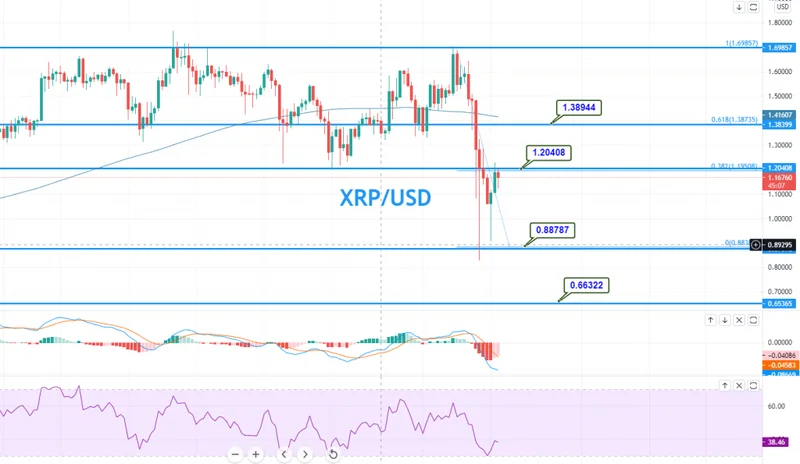Article Directory
It’s being called the “XRP Black Swan.” In the span of 72 hours, the digital asset plummeted 46%, a violent nosedive from a high of $2.84 down to $1.53. For anyone watching the charts, it was like witnessing a skyscraper vanish into a sinkhole. The speed was breathtaking, erasing nearly $60 billion in market capitalization before the dust even began to settle.
The term "Black Swan" gets thrown around far too casually in finance—it’s supposed to describe a rare, unpredictable event with severe consequences. But was this truly a bolt from the blue? Or was it the inevitable, catastrophic failure of a system overloaded with leverage and expectation?
When you strip away the panicked headlines and look at the raw data, the event looks less like a random act of nature and more like a controlled demolition. The triggers were external, yes, but the scale of the collapse was entirely internal. This wasn't a Black Swan. This was a scheduled stress test that the market spectacularly failed. Let’s perform the autopsy.
The Anatomy of the Collapse
Every market collapse has a catalyst, a spark that ignites the dry tinder. In this case, there were two. First, Donald Trump’s sudden announcement of a 100% tariff on Chinese imports sent a shockwave across all risk assets. The S&P 500 dropped 2.1%, the Nasdaq fell 2.4%. This was the macro tremor.
The second spark was crypto-specific and far more damaging to sentiment. A U.S. government shutdown forced the SEC to indefinitely postpone decisions on seven XRP-spot ETF applications, including the highly anticipated filing from BlackRock. The expected approval window—a period between October 18 and November 14 that traders had circled on their calendars—evaporated overnight. Hope turned to despair, and the sell-off began.
But these triggers don’t explain the sheer velocity of the crash. For that, we have to look at the market’s internal structure. In the month leading up to the event, on-chain data shows that whale wallets (those holding between 1 million and 10 million XRP) had systematically offloaded approximately 440 million XRP. That’s an outflow of $1.25 billion. Was this prescience or just prudent risk management ahead of a known political deadline? Either way, the largest players were already reducing their exposure while retail was still betting on an ETF approval.
When the bad news hit, the system was already primed for a fall. The liquidation cascade was immediate and brutal. Across the entire crypto market, over $19 billion in leveraged positions were wiped out in a single day—$19.31 billion, to be more exact. Of that, XRP alone accounted for a record-breaking $707 million. Imagine a screen with a live feed of liquidations: a relentless, scrolling waterfall of red, each line item a trader’s account being vaporized. That’s what fueled the drop from a technical correction into a full-blown panic.

This is the financial equivalent of a poorly designed bridge. The political news was the unexpected weight of a heavy truck, but the catastrophic failure came from the pre-existing weaknesses in the structure—the absurd levels of leverage that traders had built up. The price didn't just fall; it was pulled down by the weight of its own speculative excess.
The Great Divergence: Whales Feast While Retail Flees
Here’s where the data gets truly interesting. As the panic crescendoed and retail traders were being forcibly liquidated or were selling to cut their losses, a different pattern emerged from another corner of the market. On-chain analysis reveals a significant accumulation of XRP by institutional-grade investors, particularly those operating out of Europe.
And this is the part of the report that I find genuinely puzzling. During the peak of the crash, Swiss-based exchanges accounted for over 22% of the global XRP trading volume. That is a massive statistical outlier. These weren't panicked sellers; this was the methodical absorption of cheap coins by large, patient capital. While the Relative Strength Index (RSI) plunged to 26.9—its most oversold level in over a year—these players saw a fire sale, not a funeral.
The event created a stark divergence. On one side, you have the leveraged retail trader, whose sentiment was crushed by the ETF delay and whose position was automatically closed by the exchange. On the other, you have a well-capitalized fund in Zurich or Geneva, unburdened by leverage, calmly executing buy orders at price levels not seen in months.
So, who was right?
The subsequent price action provides the answer. After hitting its nadir, the price didn’t continue to bleed out. It found a floor and stabilized in a tight range around $2.40, a key Fibonacci retracement level. The trading volume, which had surged to over $18 billion (a massive jump from its typical $7 billion average), subsided. The market had been purged. The weak, over-leveraged hands were shaken out, and their holdings were transferred to stronger, more convicted players. It’s a brutal, but classic, market cycle. The question we should be asking is not why it happened, but who benefited from it? And what does it say about the so-called "democratization of finance" when the institutions are the ones with the capital to buy the blood in the streets?
A Feature, Not a Bug
Let's be perfectly clear. The "XRP Black Swan" was not an unpredictable anomaly. It was a violent, market-driven deleveraging event that was both predictable and, from a certain cold-blooded perspective, necessary. The combination of political uncertainty and speculative ETF hype created a fragile environment built on borrowed money. The crash wasn't the problem; it was the painful, inevitable solution. It exposed the chasm between institutional and retail behavior, and it served as a brutal reminder that in markets, liquidity is a privilege, not a right. This wasn't a system breaking; it was a system revealing its true nature.
